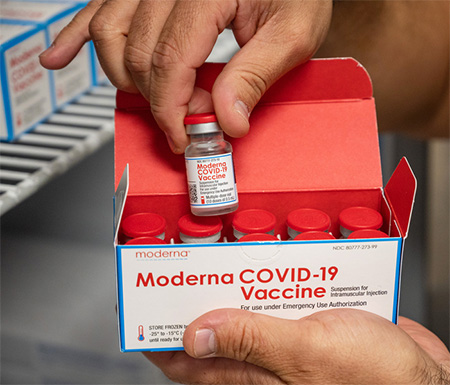What is the risk of long COVID?
New CDC report shows long COVID cases in U.S. adults are on the decline
The percentage of adults in the United States reporting long COVID symptoms has decreased according to a new report from the Centers for Disease Control and Prevention (CDC).
The CDC analyzed data from the Census Bureau’s Household Pulse Survey from June 2022 to June 2023. The data showed long COVID prevalence among all United States adults fell from 7.5% to 6%.

“While we do not have great data on the rate of long COVID development and are just getting data on the burden of disease, it does appear that we are seeing a decrease of the condition,” said Christian Sandrock, pulmonary expert and director of critical care at UC Davis Medical Center. “Locally, we are seeing fewer referrals to our Post-COVID clinic and facilities — which provides us hope this trend will continue.”
The CDC report suggested that the decline in long COVID cases could be due to an overall decline in the number of COVID-19 infections, a decline in severe infections and an increase in preventive measures.
Sandrock agreed that the combination of current variants could be playing a role. For example, there may be fewer long COVID cases with Omicron variants He notes that COVID-19 vaccines, improved treatments options like Paxlovid and prior COVID-19 infection are likely also reducing the likelihood of long COVID.
“I believe vaccination and better treatments are having the biggest impact,” he added.
However, the report showed that more than one in four (26.4%) long COVID patients still report significant limitations in their ability to perform day-to-day activities. The data show that this percentage of people with significant changes to daily life has not changed since the beginning of the pandemic.
According to the CDC, long COVID is not a single condition but rather “a wide range of new, returning, or ongoing health problems that people experience after first being infected with the virus that causes COVID-19.”
Long COVID patients report a wide range of physical and mental health conditions including:
- malaise
- fatigue
- breathing challenges
- cardiovascular abnormalities
- migraines
- mental health impairments
“We are still trying figure out the cause of long COVID, so current treatment is focused on treating the patient's disease symptoms,” Sandrock explained. “We utilize beta blockers for autonomic dysfunction, anti-depressants for brain fog and depression or pulmonary rehab for patients with trouble breathing.”
Recently, the U.S. Department of Health and Human Services announced it is forming a new Office of Long COVID Research and Practice to study the condition and help those who have been diagnosed with it.
The more we can learn about long COVID, the better prepared we will be to care for current long COVID patients and prevent future cases.”—Christian Sandrock
“The more we can learn about long COVID, the better prepared we will be to care for current long COVID patients and prevent future cases,” Sandrock added.
Learn more about COVID-19 vaccines and how to schedule yours with UC Davis Health






